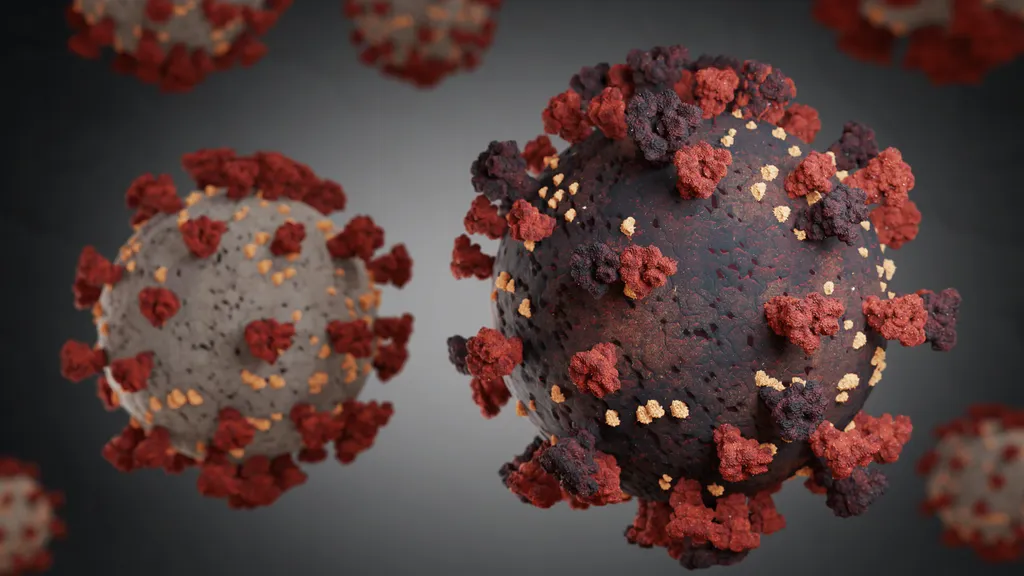세계보건기구(WHO)는
새로운 '뮤' 코로나바이러스
변종이
백신에 의한 면역에서
벗어날 수 있다고 밝혔다.
By Rachael Rettner 5 days ago
5일 전 - 레이첼 레트너
The World Health Organization has added "mu" to it's list of "variants of interest."
세계보건기구(WHO)는
"관심종" 목록에
"뮤"를 추가했다.

(Image credit: Shutterstock)
(사진제공: 셔터스톡)
Health officials are watching another new coronavirus variant, dubbed "mu," which they say has concerning mutations that could allow it to escape vaccine-induced immunity.
보건당국은
그들이 말하기로
백신에 의한 면역에서
벗어날 수 있는
돌연변이와 관련된
'뮤(mu)'라는 별명이 붙은
다른 하나의
새로운
코로나 바이러스 변종을
주시하고 있다.
The variant, also known as B.1.621, was first detected in Colombia in January 2021, according to the World Health Organization (WHO). On Monday (Aug. 30), WHO classified it as a "variant of interest," or VOI, and named it mu.
세계보건기구(WHO)에 따르면,
B.1.621로도 알려진 이 변종은
2021년 1월 콜롬비아에서
처음
검출됐다.
WHO는
월요일(8월 30일)
이것을 '관심 변종',
즉 VOI로 분류하고
뮤( mu)로 명명했다.
The VOI label means the variant is increasing in prevalence in multiple areas and has mutations that are likely to affect viral characteristics, such as transmissibility or disease severity, Live Science previously reported. In contrast, officials use the term "variant of concern," or VOC, once reliable data show that the variant has increased transmissibility — such as what's been seen with the delta variant — or other worrisome features, such as the ability to evade vaccines.
앞서 라이브 사이언스는
VOI 라벨은
변종이 여러 영역에서
유병률이 증가하고 있으며
전염성이나 질병 중증도와 같은
바이러스 특성에
영향을 미칠 가능성이 있는
돌연변이가 있음을
의미한다고 보도했다.
이와는 대조적으로,
관계자들은
"관련 변종(VOC)"이라는 용어를
사용하고 있는 데,
일단 신뢰할 수 있는 데이터는
이 변종이 —
델타 변종에서 볼 수 있는 것과 같은 —
전염성을 증가시켰거나
백신 회피 능력과 같은
다른 우려스러운 특징을
가지고 있다는 것을 보여준다.
The mu variant "has a constellation of mutations that indicate potential properties of immune escape," WHO officials wrote in the agency's weekly epidemiological report on COVID-19, published Tuesday (Aug. 31). Early data in lab dishes show that antibodies generated in response to COVID-19 vaccination or previous infection are less able to "neutralize," or bind to and disable, the mu variant, the report said. However, this finding still needs to be confirmed by future studies. Mu shares some mutations with the beta variant (a VOC), including mutations known as E484K and K417N, according to Medpage Today.
세계보건기구(WHO) 관계자들은
화요일 (8월 31일) 발간된
COVID-19 주간 역학 보고서에서
이 뮤(mu) 변종은
"면역 탈피의
잠재적 특성을 나타내는
일단의 돌연변이를 갖고 있다"
고 썼다.
실험용 접시에서의
초기 데이터는
COVID-19 백신 접종이나
이전 감염에 대응해
생성된 항체가
뮤(mu)변종을 "중화"하거나
혹은 뮤(mu)변종에 결합
그리고 뮤(mu)변종을
비활성화하는
능력이 떨어진다는 것을
보여준다고
보고서는 밝혔다.
그러나,
이 발견은
여전히 향후 연구에 의해
확인되어야 한다.
메드페이지 투데이(Medpage
Today)에 따르면
뮤(Mu)는
E484K와 K417N으로 알려진
돌연변이를 포함한
베타 변종(a VOC)과
일부 돌연변이를 공유한다.
So far, the mu variant has been detected in 39 countries, including in some large outbreaks in South America and Europe. The variant has also been detected in the U.S. — a study from the University of Miami detected the variant in 9% of cases at the Jackson Memorial Health System in Miami, according to Medpage Today. Although the variant makes up less than 0.1% of all COVID-19 cases worldwide that undergo genetic sequencing, it accounts for 39% of sequenced cases in Colombia and 13% in Ecuador, and has been increasing in prevalence in these areas, the report said.
지금까지
이 돌연변이는
남미, 유럽에서의
몇몇 거대한 발생을 포함하여
39개국에서 검출됐다.
메드페이지
투데이에 따르면
마이애미 대학의 연구결과
마이애미의
잭슨 메모리얼 헬스 시스템에서의
9%의 사례에서
이 변종이 검출됐다.
보고서는
이 변종이
전 세계적으로
유전자 염기서열을 겪는
모든 COVID-19 환자 중
0.1% 미만을 차지하고 있지만
콜롬비아에서는
염기서열문제 환자중 39%,
에콰도르에서는
염기서열문제 환자중의 13%를
차지하며
이들 지역에서의
유병률이
증가하고 있다고 밝혔다.
More studies are needed to better understand the mu variant and keep an eye on its spread, WHO said.
세계보건기구(WHO)는
돌연변이를 더 잘 이해하고
확산 상황을 관찰하기 위해서는
더 많은 연구가 필요하다고 말했다.
Exactly how transmissible mu is has not been determined, but Public Health England recently noted that the variant doesn't seem to be spreading particularly rapidly, and that it appears "unlikely" to be more transmissible than the delta variant. As a result "there is no indication that [mu] is out-competing delta" at this time, the agency said in a risk assessment of the variant. But the variant's ability to escape vaccine-induced immunity "may contribute to future changes in growth," the assessment said.
정확한 전파 가능한 뮤(mu)가
얼마인지는 밝혀지지 않았지만
영국 공중보건부는
최근
이 변종이
특별히 빠르게 퍼지는 것 같지는 않으며
그리고
이것은 델타 변종보다
전파 가능성이
더 높아 보이지 않는다고
지적했다.
그 결과
현재로서는
"뮤[mu]가
경쟁 델타를
능가한다는
징후는 없다"
고 영국 공중보건부는
변종 위험 평가에서 밝혔다.
그러나
백신에 의한
면역력을 벗어날 수 있는
변종균의 능력은
"향후 성장변화에
기여할 수 있을 것"
이라고 평가했다.
WHO is currently monitoring five variants of interest (eta, iota, kappa, lambda and mu) and four variants of concern (alpha, beta, gamma and delta).
WHO에서는 현재
5가지 관심 변종
(에타, 아이오타, 카파, 람다 및 뮤)과
4가지 관련 변종
(알파, 베타, 감마 및 델타)을
모니터링하고 있다.
Originally published on Live Science.
라이브 사이언스에 원본으로 발간됨.

댓글 없음:
댓글 쓰기